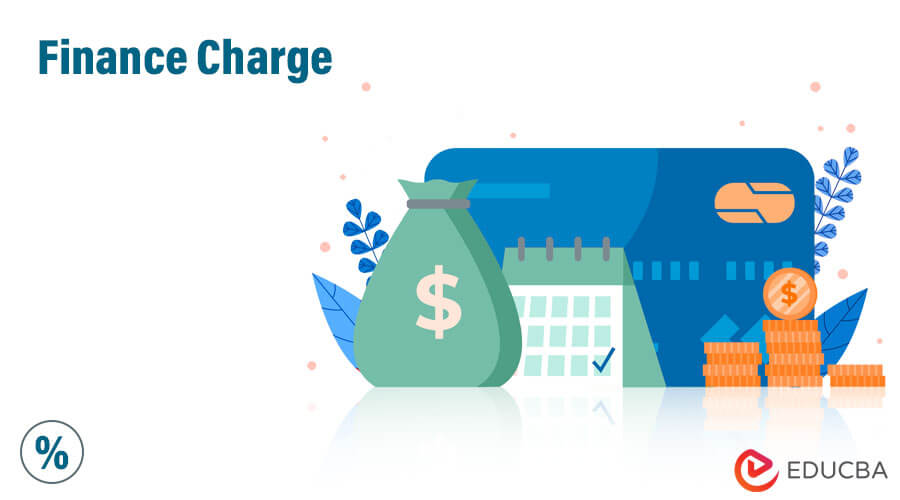Updated July 12, 2023
What is a Finance Charge?
The term “finance charge” refers to the fee charged by a lender or creditor for extending a loan or credit to a borrower. The most common practice is to charge the fee as a flat fee or in terms of the percentage of the borrowed fund. Besides the interest charges charged by the lender, a finance charge also includes various other costs, such as the cost of carrying the debt, account maintenance fees, transaction fees, late fees, etc.
Key Takeaways
Some of the key takeaways of the article are:
- The Lending Act and the Credit Card Accountability Responsibility and Disclosure (CARD) Act of 2009 govern finance charges.
- Finance charges include all types of costs incurred by a borrower for availing of any credit.
- Borrowers have to pay finance charges in addition to the borrowed money.
- Finance charges can be calculated as a percentage of the borrowed money (interest rate) or as a flat fee (transaction fees).
- Making extra payments to reduce the outstanding balance faster can help borrowers save on finance charges.
- The Lending Act and the CARD Act of 2009 established regulations and guidelines for finance charges to protect consumers.
Example of Finance Charge (With Excel Template)
Let us take a look at the following examples to understand the concept of the finance charge.
Example #1
Let us assume David charged $1,000 on his credit card in April 2021, and he could only manage to pay back $500 by the due date. Thus, his credit card obligation stood at $500 after the due date. Next month, he neither used his credit card nor made any payments, which means his average daily balance remained at $500, so he had to pay a finance charge on that amount.
After the end of the next billing cycle, the credit card company calculated the finance charges based on the balance amount, APR, and the number of days in the billing cycle. For example, if the APR is 18% and the billing cycle has 21 days, determine David’s finance charges.
Given, Balance amount = $500
APR = 18%
No. of days in billing cycle = 21
The formula to calculate the finance charge is as below:
Finance charges = Balance amount * APR * (No. of days in billing cycle / 365)
= $500 * 18% * (21 / 365)
= $5.18
Therefore, David had to pay the lender finance charges of $5.18.
Example #2
Let us take the example of Joe, who had a 30-year mortgage loan of $500,000 to purchase his new apartment. If the mortgage loan carried an APR of 8%, determine the finance charges to be paid by Joe over the course of the loan.
Given, Amount = $500,000
APR = 8%
No. of months = 30 * 12 = 360
The formula to calculate monthly payment is as below:
Monthly payment = Amount * (APR/12) * ((1 + APR/12)No. of months) / (((1 + APR/12)No. of months) – 1)
= $500,000 * (8%/12) * ((1 + 8%/12)360) / (((1 + 8%/12)360) – 1)
= $3,669
The formula to calculate the finance charge is as below:
Finance charges = Monthly payment * No. of months – Amount
= $3,669 * 360 – $500,000
= $820,776
Thus, Joe has to finance charges of $820,776 over the course of the 30-year mortgage loan.
Regulations of Finance Charge
The following regulations govern the finance charges:
- Lenders must disclose all types of fees being charged to the consumer as per the Truth in Lending Act. The fees primarily include standard fees, interest rates, and penalty fees.
- As per the Credit Card Accountability Responsibility and Disclosure (CARD) Act of 2009, lenders should offer a minimum grace period of 21 days before charging interest on new purchases.
How to Save Money on Finance Charges?
In example 2, it can be seen that the finance charges paid over a long term eventually add up to exceed the actual borrowed money. So, the important question is, “Is there any way to save money on these finance charges?” The answer is “Yes.”
In the case of mortgage loans or any other loans, the borrowers can save a lot of money on finance charges by making extra payments (more than the scheduled monthly payments) every month. For instance, if Joe makes a mortgage payment of $4,000 per month in place of $3,669, he can save up to ~$242,000, while the loan would be paid off in less than 23 years. So, it can be seen that the extra payments save on the number of finance charges and result in paying off the loan much earlier than scheduled.
Avoiding Finance Charge
Avoidance of finance charges is generally associated with credit card payments. Basically, a credit cardholder needs to pay finance charges for carrying a balance (as seen in example 1), and thus finance charges can be avoided by paying the full balance every month. In other words, to avoid finance charges, the payment should be made within the grace period, which is usually in the range of 21 to 25 days. The billing statement will add finance charges to the following statement based on the unpaid balance and any new purchase if only a part of the balance is paid.
Conclusion
Although finance charges are expenses for a borrower, it also results in the borrower having liquidity at his disposal in exchange for a particular amount of money. Further, there are ways to avoid and also save on finance charges. Government regulations ensure that consumers are not exploited.
Recommended Articles
This is a guide to Finance Charge. Here we discuss the definition, regulations, and how to Save money on Finance Charges, along with practical examples and downloadable Excel templates. You may also look at the following articles to learn more –



